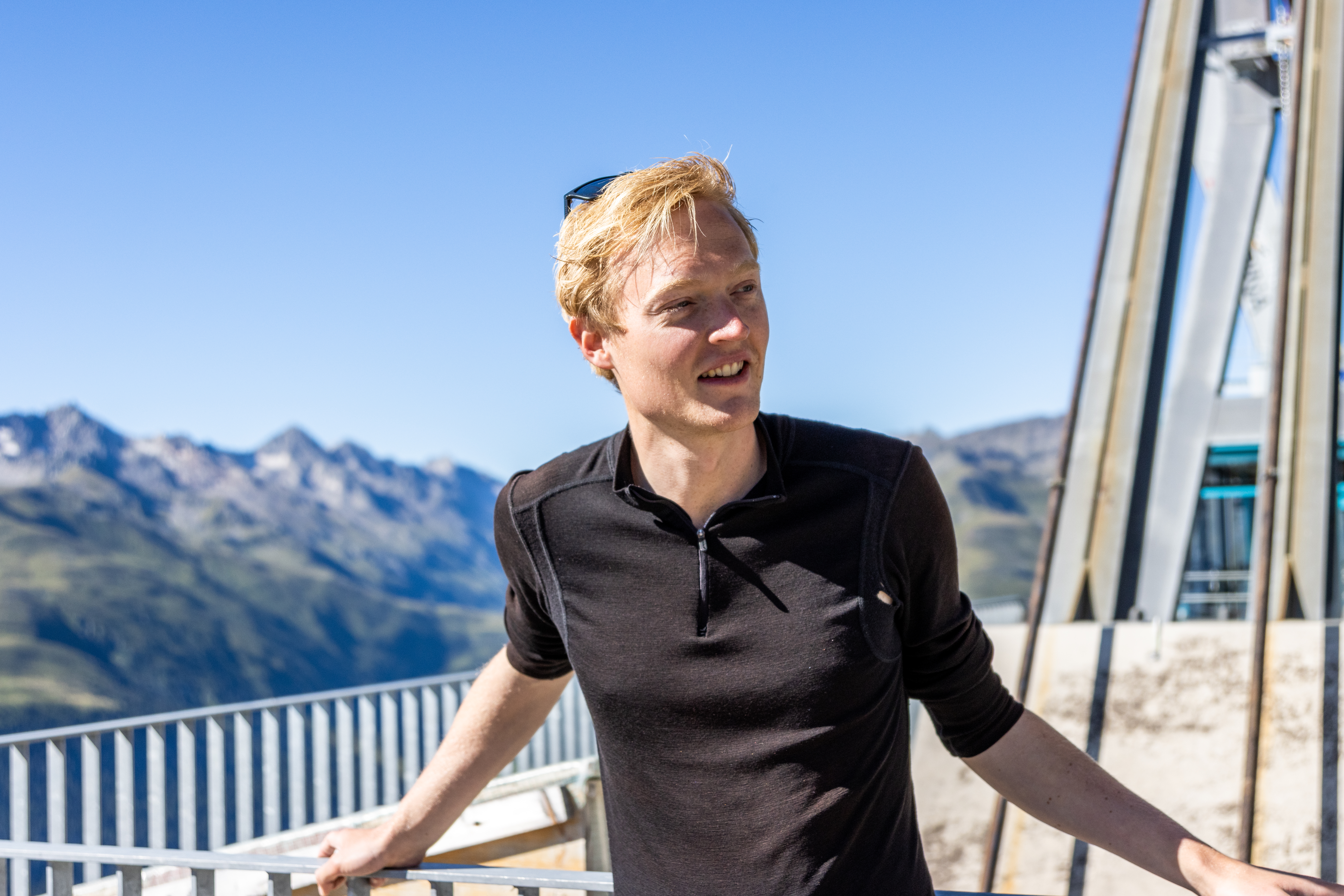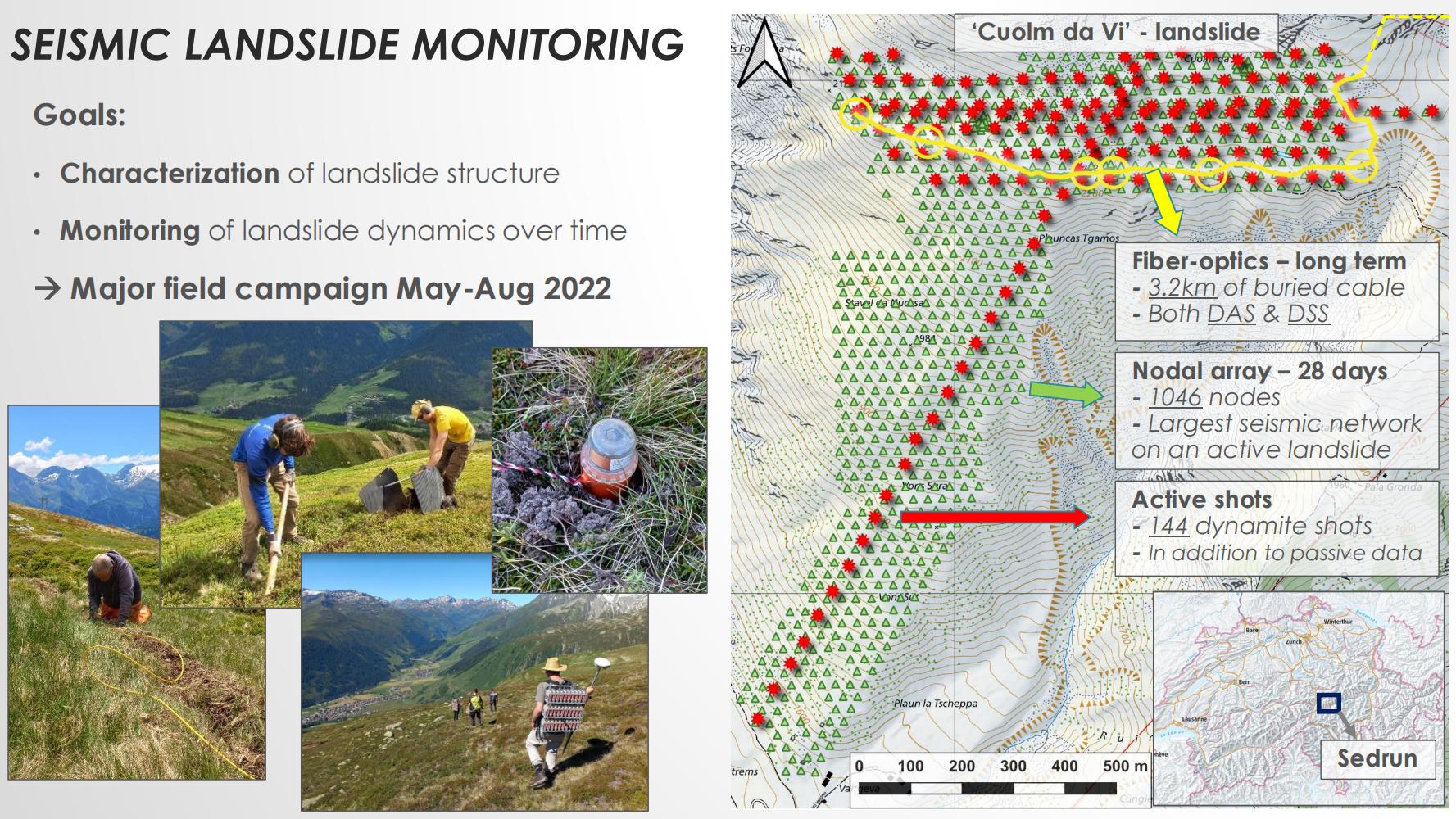SPIN ESR 4.3: Monitoring hazards from a changing alpine environment
Name: Tjeerd Kiers 
Institution: ETH Zürich (ETHZ), Department of Earth Sciences
Email: tjeerd.kiers@erdw.ethz.ch
PhD title and defense date: Listening to Unstable Slopes: Seismic Characterization and Monitoring of an Alpine Slope Instability Using Fibre-Optic Techniques and Dense Nodal Networks, September 26, 2025.
Introduction
My name is Tjeerd and I was born in the Netherlands a bit more than 25 years ago. After a Bachelor Earth Sciences in Utrecht and the IDEA League Applied Geophysics Joint Master, I ended up at ETH Zurich for my landslide monitoring PhD-project. In this project, we aim to advance landslide characterization and monitoring using large-scale nodal arrays and fibre-optic techniques. Hence, during the last year, I’ve been many weeks in field to install sensors, trench fibre-optic cables and record seismic data. Personally, these landslide activities in the Central Swiss Alps match my hobbies very well, as all my hobbies can be summarized by one word: Mountains. During the weekends and holidays, I try to enjoy the mountains as much as possible by doing alpine routes, ski touring trips and biking tours together with friends. Being so close to the Alps, I consider a big advantage of living in Zurich compared to my fully flat home country ;) I’m really looking forward to further continuing my landslide monitoring project here in Zurich for the coming years and to keep seeing the other SPIN-participants during the short courses and workshops that are still ahead!
Publication
Wuestefeld A., Z. J. Spica, K. Aderhold et al. including P. Jousset, T. Kiers, S. Dias-Meza, The Global DAS Month of February 2023, Seismological Research Letters, 2023, doi/10.1785/0220230180/629787/The-Global-DAS-Month-of-February-2023
Buisman, M., Martuganova, E., Kiers, T., Draganov, D., & Kirichek, A. (2022). Continuous monitoring of the depth of the water-mud interface using distributed acoustic sensing. Journal of Soils and Sediments, 1–7.
Edme, P., Kiers, T., Paitz, P., & Robertsson, J. (2022). Distributed Fiber-Optic Sensing for Local Ground-Roll Estimation and Attenuation. In 83rd EAGE Annual Conference & Exhibition (pp. 1–5).
Kiers, T., Edme, P., Paitz, P., & Fichtner, A. (2021). Towards Exploiting the DAS-Potential in Gradiometry: Combining DAS-Collected Divergence Measurements with Conventional Receiver Data. In AGU Fall Meeting Abstracts (pp. S25H–03).
Draganov, D., Ma, X., Buisman, M., Kiers, T., Heller, K., & Kirichek, A. (2021). Non-intrusive characterization and monitoring of fluid mud: laboratory experiments with seismic techniques, distributed acoustic sensing (DAS), and distributed temperature sensing (DTS). IntechOpen.
Edme, P., Paitz, P., Sollberger, D., Kiers, T., Perron, V., Schmelzbach, C., Fichtner, A., & Robertsson, J. (2021). On the use of Distributed Acoustic Sensing for seismic divergence and curl estimations. In EGU General Assembly Conference Abstracts (pp. EGU21–12443).
Research progress
This figure provides a summary and map overview of all sensors that have been installed at the active Cuolm da Vi landslide since the May – August 2022 field campaign. This involves several kilometres of fibre-optic cable (yellow) including various loops. The dashed yellow line denotes the cable part which already existed before our field campaign for the local skiing area telecommunication purposes. The 1046 deployed Stryde nodes and 144 active dynamite shots are illustrated by the green triangles and red stars, respectively. Additionally, five long-term 3C-geophones were installed as well as two Trillion compact sensors.
